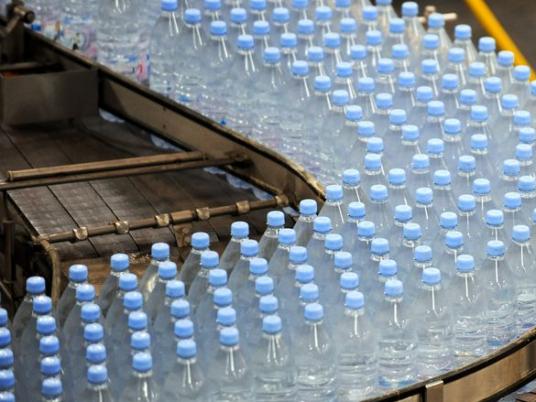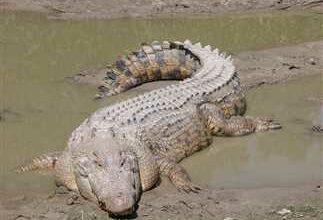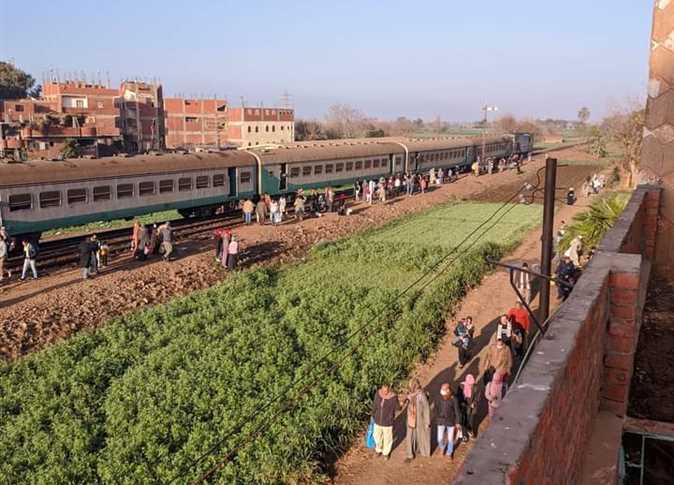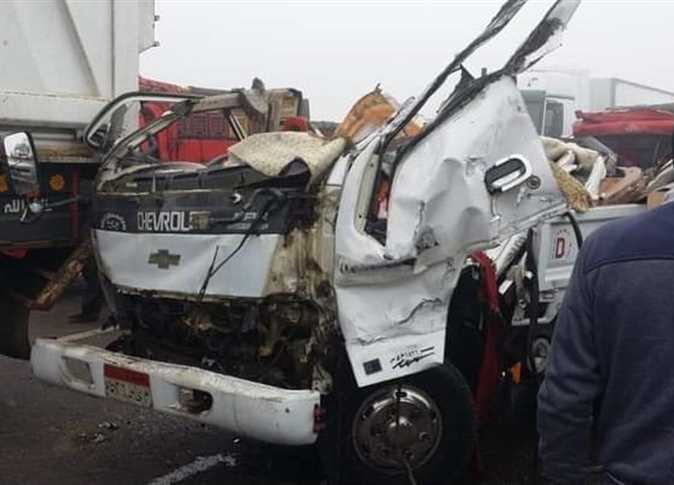Residents of Sansaft, a village in Monufiya Governorate, are suffering from an epidemic of severely contaminated local water supplies. Reports of the outbreak began to surface on Tuesday, just after Eid al-Fitr, as residents began rushing to local hospitals after falling ill.
The Health Ministry says dozens checked into public hospitals, with symptoms of severe abdominal pain, diarrhea and vomiting. But residents claim the poisoned water has afflicted thousands to differing degrees.
One 70-year-old Sansaft resident, Om Abdel Naby Ghoneim, died a few days ago. Locals blame her death on the contaminated water, but the Health Ministry says it was “age-related.”
Quick analyses of the village’s water station were done at a local hospital, confirming that it was polluted, though detailed studies have not yet taken place.
As a result of the outbreak, continuous protests at water sanitation facilities and government offices have blamed these institutions for the epidemic, amid several altercations with officials. In one instance, protesters held Health Minister Mohamed Mostafa Hamed and Governor Ashraf Helal in a hospital room for an hour, holding a bottle of brackish-looking water and chanting, “Drink it! Drink it!” until the police set them free.
To alleviate protests, the governorate has been providing residents with large containers of water and bottled water for consumption. But it still remains unknown why Sansaft residents have been falling ill since Eid.
“It is strange that it has broken out so suddenly,” says Ahmed Shaaban, vice president of the National Research Center. “Detailed studies need to be done to all water supplies.”
He explains that a handful of contamination cases are normal, but not thousands in a couple of days.
One resident told Al-Masry Al-Youm that during Eid, while sanitation station workers were away, residents reconnected their pump to the government station instead, which proved unfit for human consumption.
Another National Research Center spokesperson, who wanted to remain anonymous, says it is likely that a harmful virus entered several local water outlets at the same time.
But despite the whole country experiencing water contamination issues, why has Monufiya’s water been hit so severely?
Experts say the problem is nothing new for Monufiya Governorate, and this outbreak is simply the latest and worst case.
Mohamed Fathy, plant pathology professor at Monufiya University and organic waste management specialist, says the problem stems from the governorates’ general lack of sewage systems and waste infrastructure.
“Monufiya has the worse waste management infrastructure in all of Egypt,” he says, adding that almost 90 percent of Monufiya villages do not have access to proper infrastructure.
Therefore, most farmers and villagers, with poor education concerning waste management, will dump their septic tank contents in canals and rivers or bury them in the soil.
“Monufiya has many small farmers, so human waste and hazardous chemical waste from farms, plus all the ordinary waste, leak back into the farmland, and then into the water supplies,” he says.
“What the residents of Sansaft are protesting, whether they realize it or not, is decades of no infrastructure or education, which is then actually the government’s fault,” says Fathy. “The solution will need to come from many angles, not just cleaning the water in question.”
Shaaban says Health Ministry officials have said extensive research is being done, but the National Research Center has not yet been asked to do any. The Health Ministry was unable to comment.
But, despite health officials quickly rushing to provide residents with bottled water in the interim, another problem has arisen.
In June, Health Ministry officials conducting their monthly tests of various local bottled water companies ordered the shutdown of seven brands after finding pollutants in their well waters.
Alpha, Hadir, Seway, Aqua Delta, Tiba Aqua Mina and Aqua Soteir’s production lines were closed down, considerably reducing the availability of bottled water for consumers, which hit particularly hard during Ramadan.
Shaaban explains that these companies’ water did not comply with the World Health Organization’s (WHO) safety guidelines, falling under the quality parameters of the international organization.
“These parameters concern the chemical groups’ composition, the bacteriological parameters and the presence of parasites, amoebas, viruses, organic metals or volatile organic compounds in the water,” he says.
The WHO, in its water safety guidelines, puts a primary emphasis on preventing or reducing the entry of pathogens into water sources. Officials found protozoa in the bottled water samples, transmitted by fecal cysts of contaminated water.
Shaaban says pollution from nearby sources of wastewater discharges from septic tanks and agricultural waste water caused this parasite to be found in the well water, and later in the bottled water.
Another problem is the shallowness of the wells. “A lot of companies have rather shallow wells — between 50 and 300 meters below ground — when pure, healthy water is found much deeper,” he says.
With seven mineral companies off the market, providing customers with sufficient, “safe” bottled water has turned out to be an impossible mission.
Despite a recent declaration by the health minister asserting that the remaining companies would manage to supply the market, shops and supermarkets nationwide have struggled to meet the demand.
Waheed Tharwat is the owner of a usually well-stocked grocery store in Dokki. The fridges at the back of the shop are crammed with sodas, juices and even imported fresh cream, but the shelf reserved for water bottles is completely empty.
“I received one box of water yesterday that I bought for LE36,” he says. “I buy each bottle for LE3, it’s enraging. The supply is extremely random — every day, I give a call to the Nestle supplier, and every day he promises to come. But he rarely does.”
Nestle’s two brands of bottled water, Baraka and Nestle Pure, have passed Health Ministry inspections and are considered safe.
But despite being Egypt’s largest bottled water company and holding about 50 percent of the market, it is unable to comply with the recent spike in demand.
“The market for bottled water in Egypt grows by 20 percent each year,” says one Nestle official who wishes to remain anonymous. “And it has become one of the most dynamic sectors of the food and beverage industry.”
He says that since the seven companies were shut down, Nestle has increased its production. But it cannot cover the whole market and would need two years to do so.
The 175-meter deep Nestle well is located in Banha, the capital of Qalyubiya Governorate in the Delta. The official says the well water there is tested once or twice a month by a Health Ministry team.
“We also run weekly water quality tests through our quality engineers and send the results to Switzerland to Nestle’s head office,” he adds.
It is not possible at this stage to predict when the bottled water supply will return to normal, in a country in which 1 million water bottles are sold every day.
Despite the contamination of tap water in Monufiya Governorate, Shaaban still says people living in major cities can consume tap water.
“But no one in the Delta should drink tap water. The derelict state of the infrastructure makes it too risky,” he stresses.
He says that, in terms of home filters, the safest option is an ultraviolet filter, which kills the bacteria.
“The normal filter is not a safe option because when the water flow stops, bacteria and microorganisms multiply and accumulate in the distribution system. When opening the tap, all these particles will be flushed in the glass, and this is hazardous to health.”
This piece was originally published in Egypt Independent's weekly print edition.




